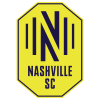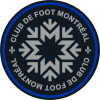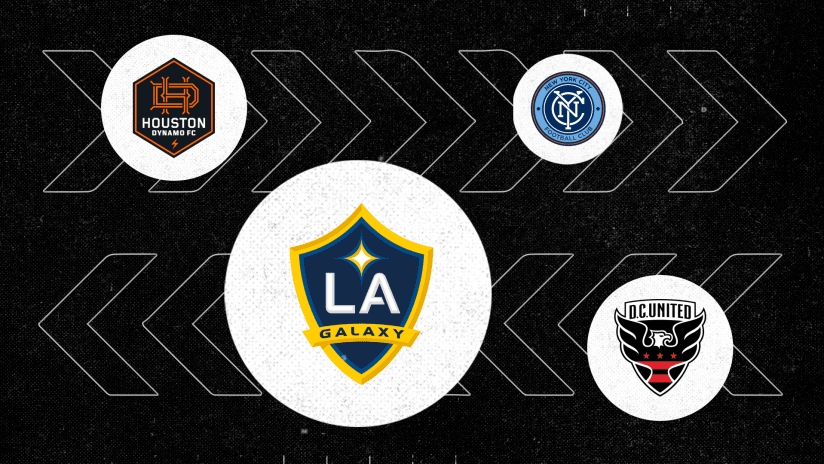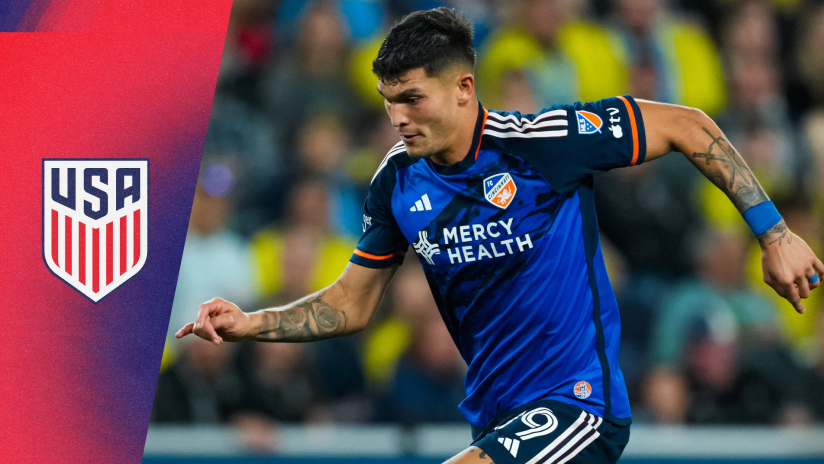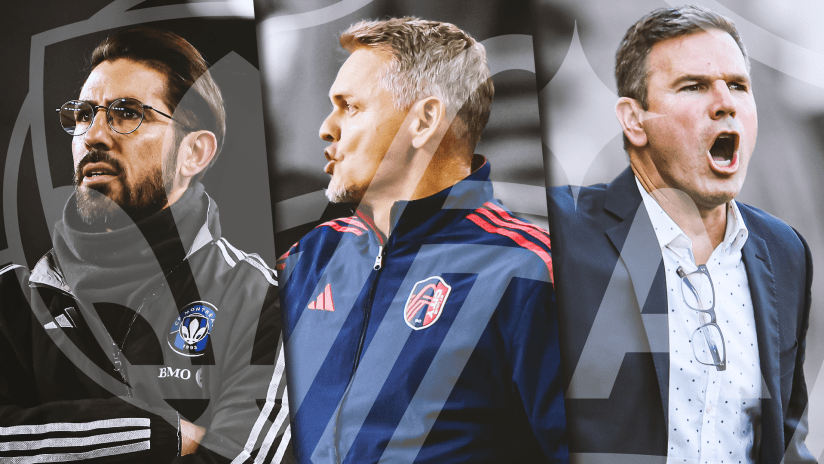If you think this trade window has been a bit boring, well, you’re not alone. The folks in the middle of these talks are kind of bored, too.
When talking with sources across the league and in the industry, they joke about boredom as well, that nothing is really happening yet. Talks are ongoing, but nothing is too serious or advanced. There’s preliminary groundwork being laid, reaching a wait-and-see stage.
It remained pretty slow around St. Louis CITY SC’s Expansion Draft last Friday night, which was a surprise to me. Just two trades unfolded:
- St. Louis selected forward Jake LaCava from the New York Red Bulls and traded him to Inter Miami CF
- Right after the Draft, St. Louis announced the acquisition of center back Tim Parker from Houston Dynamo FC
The deadline for all clubs to decide on 2023 contract options just passed on Monday, which provides further clarity. Free agency officially opens on Wednesday at 1 pm ET.
The point is: It’s still very early in the offseason – MLS Cup 2022 was just 10 days ago. Things will heat up eventually.
Here are five teams I expect to be buyers on the trade market this winter, based on the (assumed) reserve of allocation money + recent history that has found them on the trade market.
Nashville SC general manager Mike Jacobs spoke of a “war chest of allocation money” numerous times last year. The club traded away four international spots for good value last year and sent defender Alistair Johnston to CF Montréal for $1 million in General Allocation Money (GAM).
This offseason they’ve already traded away four 2023 international roster spots. They continue to regenerate their reservoir of allocation money as well as any club across the league.
Nashville haven’t made a “big” move with allocation money in a bit, but have ample money, room and desire to strike when ready.
The club has excelled on the domestic market since their expansion season, with cornerstones over the last three seasons – Walker Zimmerman (from LAFC), Dax McCarty (from Chicago) and Aníbal Godoy (from San Jose) – all arriving in trades ahead of their inaugural game in 2020.
They have continued to mine the market as the years went on, like trades for ex-Red Bulls homegrown Alex Muyl and ex-Toronto homegrown Jacob Shaffelburg (who, per sources, is staying permanently) as their best two recent examples. Both players are wingers.
Nashville have struggled to find a running mate for 2022 MVP and Golden Boot presented by Audi winner Hany Mukhtar up top. Teams often look international with their resources in attacking spots, but intra-league trades have seen forwards like Brandon Vázquez (Cincy), Jeremy Ebobisse (San Jose), Romell Quioto (Montréal), Diego Rubio (Colorado) and Julian Carranza (Philly) all excel in new locations.
Montréal were among the league's best stories in 2022, finishing in second place in the Eastern Conference under manager Wilfried Nancy’s attractive, attacking style of play. That squad was built heavily through the trade market.
Djordje Mihailovic blossomed as the team’s best player after he arrived from Chicago, but Quioto (from Houston), Kamal Miller (from Austin) and Johnston (from Nashville) were three absolute hits on the trade market. It’s an area they’ve targeted and executed very well.
With Mihailovic heading to Eredivisie side AZ Alkmaar this winter, and Canadian international Ismael Kone 99% sure to follow him to Europe after the World Cup, the club will have a bunch of GAM to reset and reload. It’s going to be extremely difficult to continue to hit at the rate/value they have, but they’ll have the allocation money to keep trying after outgoing transfers and contract movement.
Montréal will likely need another attacking midfielder unless Mihailovic’s replacement is identified outside of the league, as well as a few other places on the roster. It’ll be a busy time for vice president and chief sporting officer Olivier Renard.
I expected the Rapids to be very busy in the summer after trading Canadian international midfielder Mark-Anthony Kaye to Toronto… but nothing too major materialized. A couple of smaller signings came through. I expect them (again) to be very aggressive this winter, as do sources across the league.
In 2021, the Rapids built their Western Conference No. 1-seeded team largely through trades. They continue to emphasize this roster-building strategy to fit their club makeup. It’s worked well for them, often outperforming expectations, though 2022 was a down year.
Colorado traded away Kellyn Acosta to LAFC (for up to $1.5 million GAM) in the winter, then sent away Kaye to Toronto (for $1.025 million GAM, Ralph Priso and other assets) in the summer. They transferred homegrown left back Sam Vines to Belgium’s Royal Antwerp 18 months ago and got a loan fee for homegrown midfielder Cole Bassett last summer; both moves should boost allocation stocks.
The Rapids still have to decide whether or not forward Gyasi Zardes is returning. If he’s re-signed, they’ll have to send more GAM to the Columbus Crew after his midseason trade arrival in 2022. If Zardes is not re-signed, they’ll need another center forward (to play with Rubio, who’s coming off a career year). Central defense was an issue, so that’s another area they could target, though Aboubacar Keita will be back following his ACL injury.
Replacing Acosta and Kaye didn’t go smoothly, but they have high hopes for Priso. Still, maybe another central midfielder is required.
In years prior, Colorado have added Auston Trusty, Keegan Rosenberry, Lalas Abubakar, Acosta, Kaye, Michael Barrios, Rubio, Jonathan Lewis and others in the trade market. Expect further moves here from the Rapids.
Unlike the first three teams on this list, the Union haven’t exactly been known for building through trades. But, unlike their view of the SuperDraft, they haven’t ignored it either. They also should have plenty of allocation money at their disposal. Let’s start there.
Per sources, the Union are finalizing a deal to transfer homegrown midfielder Paxten Aaronson to German Bundesliga side Eintracht Frankfurt for $4 million plus add-ons and a big sell-on percentage. Transferring a homegrown is the best way to boost GAM. In the winter of 2021, they moved now-US internationals Brenden Aaronson (RB Salzburg) and Mark McKenzie (KRC Genk) to Europe.
Kai Wagner, their Best XI-level left back, is heavily expected to leave as well. Maybe right back Olivier Mbaizo, who’s at the World Cup with Cameroon, follows him. They’ll have a bunch of allocation money, even if some will have to be used to buy down contracts.
Philly added striker Carranza from Miami in a $500k GAM trade last year; that’s regarded as one of the best moves of 2022. They were active in talks for midfielder Frankie Amaya a couple of years ago before he went from Cincy to the Red Bulls in what, at the time, was one of the most expensive trades in league history.
If the Union identify the right target, they can go get him.
Last offseason, through trades and free agency, LAFC added around 1,000 games of MLS experience. They drifted too far away from that balance of experience-plus-international-signings after their record-setting 2019 season. The next two years were largely disappointing, before resetting the squad and winning the Shield-MLS Cup double in 2022.
Kellyn Acosta (up to $1.5 million GAM), Ilie Sanchez (free agent), Maxime Crépeau ($1 million GAM), Ryan Hollingshead (trade for Marco Farfan), Franco Escobar (up to $600k) and more were added in the winter. That helped provide a foundation for their trophy-filled season.
Which market will they invest further in this winter to replace a handful of key spots?
Ecuador international midfielder Jose Cifuentes is likely to have played his last game for the club and will be an expensive outbound transfer. Maybe left back Diego Palacios, too, who’s similarly at the World Cup with La Tri. Hollingshead and Escobar could leave. Acosta has a club option. There will be minutes to replace.
LAFC have a lot of players whose contracts need to be bought down with allocation money, so maybe the boost from outbound transfers will go there. But if they’ve got some excess, it wouldn’t surprise me if they were aggressive on the trade market.


